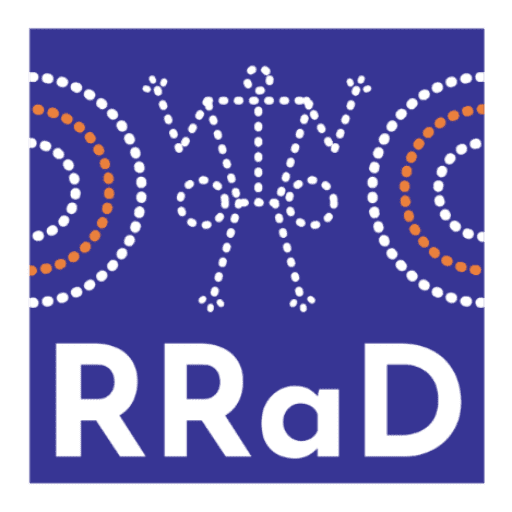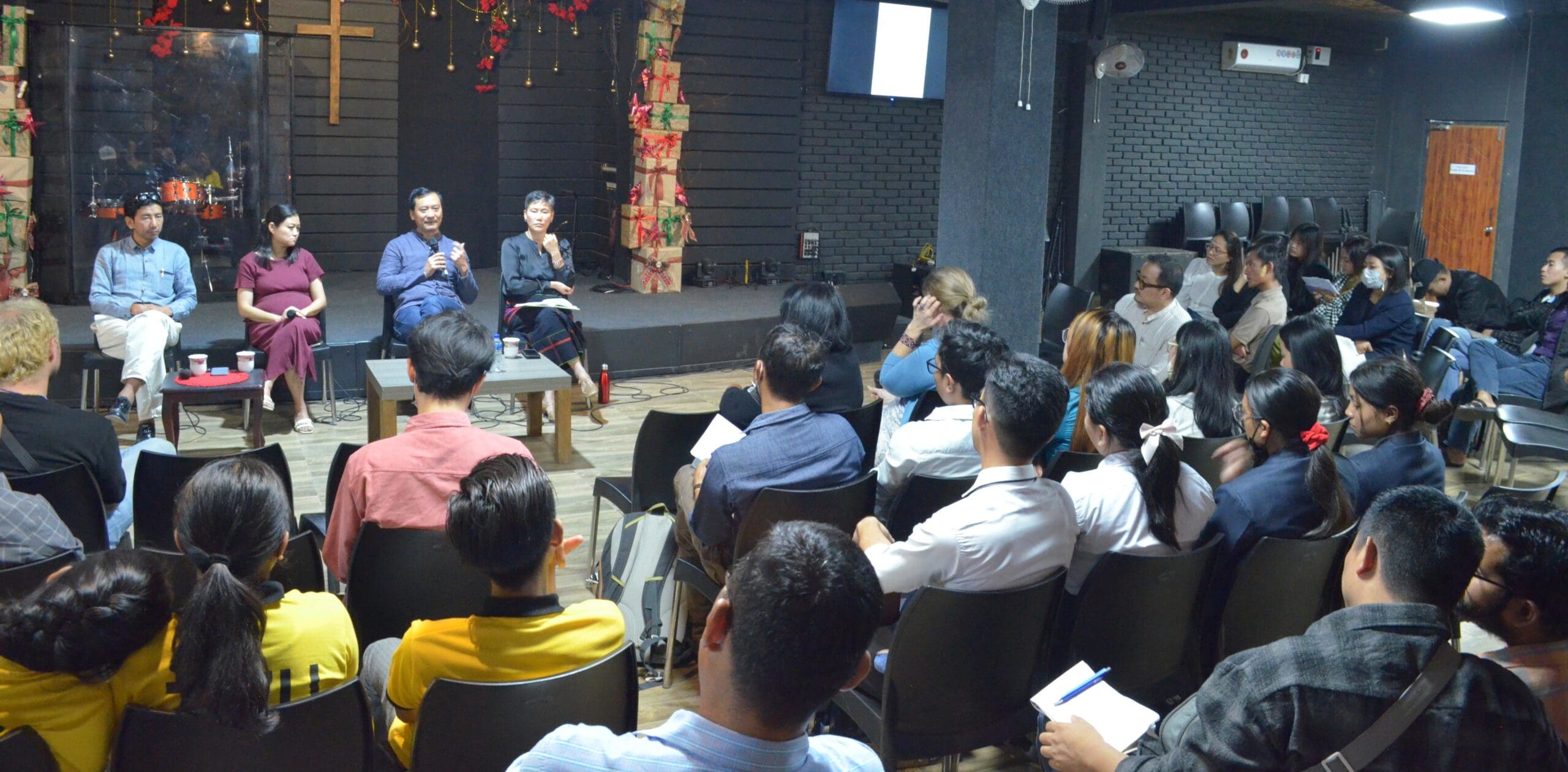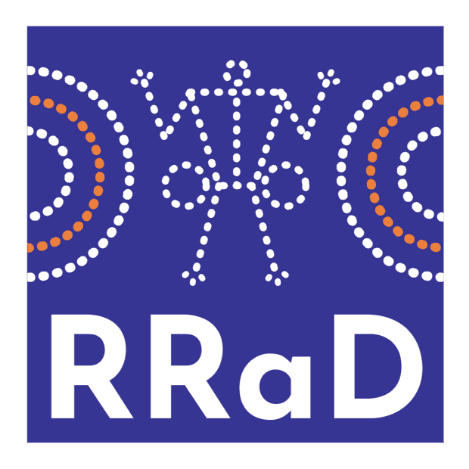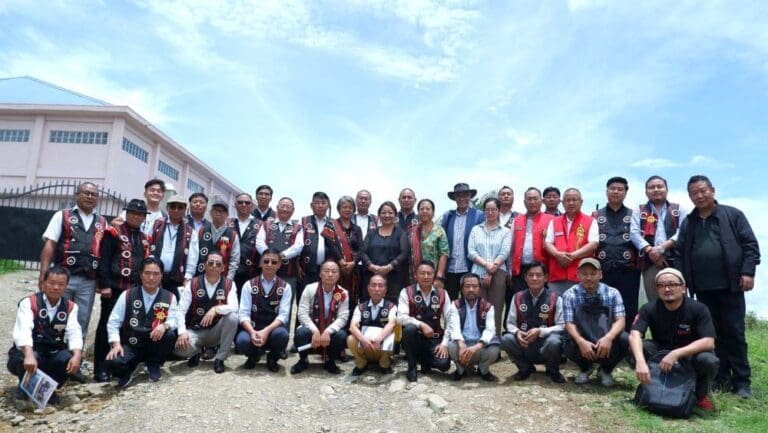Is the process of repatriating Naga ancestral human remains from the Pitt Rivers Museum (PRM) about going back into the colonial past or is it about going into the future?
Attempts are being made to understand the process and how it will impact indigenous Naga communities who are at the centre of the PRM’s initiative to decolonise the museum.
For Keneisedeu Mezhu, a participant at the XVIII Morung Lecture held in Dimapur on Tuesday, the focus was on repatriating ancestral human remains displayed in other districts of Nagaland. She asked how the engagement of repatriation in local context would go alongside the PRM initiative.
In response, panelist Kikrulhounyu Paphino, an Art Executive at Nagaland Directorate of Art and Culture, was unsure that actual procedural guidelines for such a project would be readily available with the government. However, logically, a claim has to be made by the descendent community following which bureaucratic procedures could happen, he said.
Another participant, Dr I Anungla Aier, a retired bureaucrat, supplemented that while procedures in the form of a written black and white text or guidelines may not exist; there are unwritten protocols and understanding between communities who want to engage in such initiatives.
Such instances of repatriation and peace-making have been encountered in different villages across Nagaland and they are evident in the form of monoliths and memorials that are erected to mark the events, she said.
With regard to the human remains at the PRM, Dr Aier suggested the possibility that the ‘headhunters,’ after converting to Christianity might have given away skulls or remains that are usually kept as trophies. She also asked if long bones and other skeletal parts, are mostly from burial jars and urns, or from exposed burial platforms, taken by ethnographers or colonial administrators by way of ‘grave looting;’ and if such claims were expressed during the Naga research team’s interaction with communities.
Towards this, Dr Arkotong Longkumer, a panelist and a Senior Lecturer in Modern Asia at the University of Edinburgh, underscored the need to recognise that not all the human remains in museums are a result of head-taking.
While there is a need for more research in terms of the PRM, he said that there are assumptions that all skulls are a result of head-taking because of existing colonial tropes. He said some skulls were taken as specimens for research—to measure the size of brain to measure quality of an individual, a people or a race—a prominent feature of scientific research in the Victorian era.
Another query focused on how Naga researchers generally tend to avoid bringing in a ‘Christian lens’ while looking at Naga culture and what values or moral systems would affect decisions through this ‘Naga process of repatriation.’ The participant also raised concerns about the ‘danger of imposing a new form of imperialism’ by defining how decolonised research should be done in the Naga context.
To this, panelist Dr Hewasa L Khing, Principal of Tetso College, said that there is no clear cut answer. However, she viewed that Naga researchers, most of whom are fed information from anthropologists or colonial administrators or researchers from ‘outside,’ need to question and ‘listen to our elders and the people in the villages, because they have a closer sense of connection with the lived history and realities.’
Dr Arkotong also responded that Christianity is part of the Naga landscape and cannot be avoided. However, it should not be a question of ‘either and or’ as the Nagas are constantly integrating the two aspects. Taking the example of funerals in the Naga context, he maintained that 70 percent or more of the practices are traditional and incorporated with Christian practices. ‘The two of them should go hand in hand,’ he added.
Citing interactions with communities on the issue, Dr Arkotong maintained that Naga people would find a way to accommodate the two. He referred to the theory of human flourishing and expressed hope that the Nagas would arrive at an answer with time.
On a query about whether neo-colonialism would be a hindrance towards the repatriation process, Paphino opined that present trends of leaning towards eastern or western influences should be seen ‘not as neo-colonialism but a result of colonialism itself.’ Stating that some cultures that are not as evolved as others tend to adopt ‘modern cultures’ that are set in the colonial mindset, he noted that an understanding about the hierarchies in culture is needed in order to create consciousness about ‘our own cultural knowledge.’
Similarly, Dr Arkotong took the example of neo-colonial technology and underscored the need to make strategic choices as to how the Naga people can use such tools to their advantage. Here too, he viewed that the ‘it need not be either… or; It can be both… and.’
Meanwhile, panellist Anthropologist Dr Dolly Kikon shared her experiences as an indigenous Naga teacher who has studied and worked in settler colonies (USA and Australia). In the last 20 years, she said a singular thread among the many indigenous students across continents was that of colonial and intergenerational trauma. Stating that it has been an encounter which has been a mix of anger and of an emotion surge and not knowing what to do with it, she underscored the need to recognise ‘a new process of consciousness’ when talking about the past and the moment that the Naga people are going through right now.
Giving the closing comments, Dr Aküm Longchari, Editor of The Morung Express, linked the theory of the ‘200-year Present’ espoused by Elise Boulding, to the Naga ancestral human remains at the PRM. He highlighted how the remains exist within the 200 year span from now, and how they could be families of people who exist at present.
Calling on the gathering to reflect on how they would respond to the PRM’s initiative on basis of the theory, he opined that ‘the answer is with the community.’ He viewed that the past, present and future are all interwoven and that the repatriation process is one of taking ownership and ‘self-definition’ where the Naga image ‘is not defined by others but defined by ourselves.’
While it is an incremental process, he expounded the process is approached through the lens of a shared future and with a multidisciplinary perspective involving human rights, dignity, respect, understanding, and understanding our differences.
Pondering if the Naga people can locate this process in the broader social movement towards a shared future, he further stated that a new Naga consciousness that is dignified, that has clarity, healed, and emancipated must emerge.
First published in The Morung Express on December 07 2022
Link: https://www.morungexpress.com/recognizing-the-past-embracing-the-future




